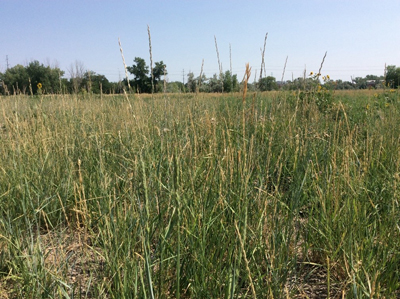Soil Science Society of America
5585 Guilford Road • Madison, WI 53711-5801 • 608-273-8080 • Fax 608-273-2021
www.soils.org
Twitter | Facebook
NEWS RELEASE
Contact: Hanna Jeske, Associate Director of Marketing and Brand Strategy, 608-268-3972, hjeske@sciencesocieties.org
What considerations go into rehabilitating land back to native grasses?
May 15, 2018 – More neighborhoods are incorporating native grasses to their landscapes—but it’s not as easy as one might think. The Soil Science Society of America (SSSA) May 15 Soils Matter blog outlines the necessary conditions to rehabilitate land back to native grasses.
 Blog author James Hartsig recommends starting with healthy topsoil. “Topsoil contains organic matter, plant available nutrients, and geochemical complexes that allow for better moisture retention,” he says. “These properties aid in the germination of native grass seeds and decrease the need for fertilizers and amendments.”
Blog author James Hartsig recommends starting with healthy topsoil. “Topsoil contains organic matter, plant available nutrients, and geochemical complexes that allow for better moisture retention,” he says. “These properties aid in the germination of native grass seeds and decrease the need for fertilizers and amendments.”
Planting in the right season—either early spring or mid-autumn, depending on the species—is also important. These seasons offer the right soil temperature and moisture levels to spur germination.
And the payoff? “The more diverse the vegetative community, the healthier the ecosystem will be for that area. Vegetation diversity creates habitats for a wide variation of soil biology, beneficial insects, and other wildlife species,” Hartsig writes.
To read the entire blog post, visit https://wp.me/p3Rg6r-nO.
Follow SSSA on Facebook at https://www.facebook.com/SSSA.soils, Twitter at SSSA_Soils. SSSA has soils information on www.soils.org/discover-soils, for teachers at www.soils4teachers.org, and for students through 12th grade, www.soils4kids.org.